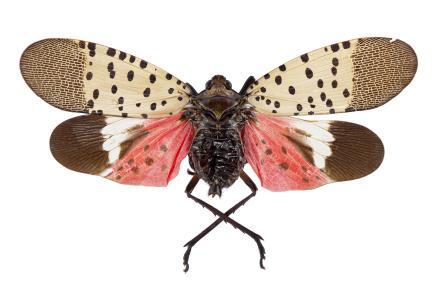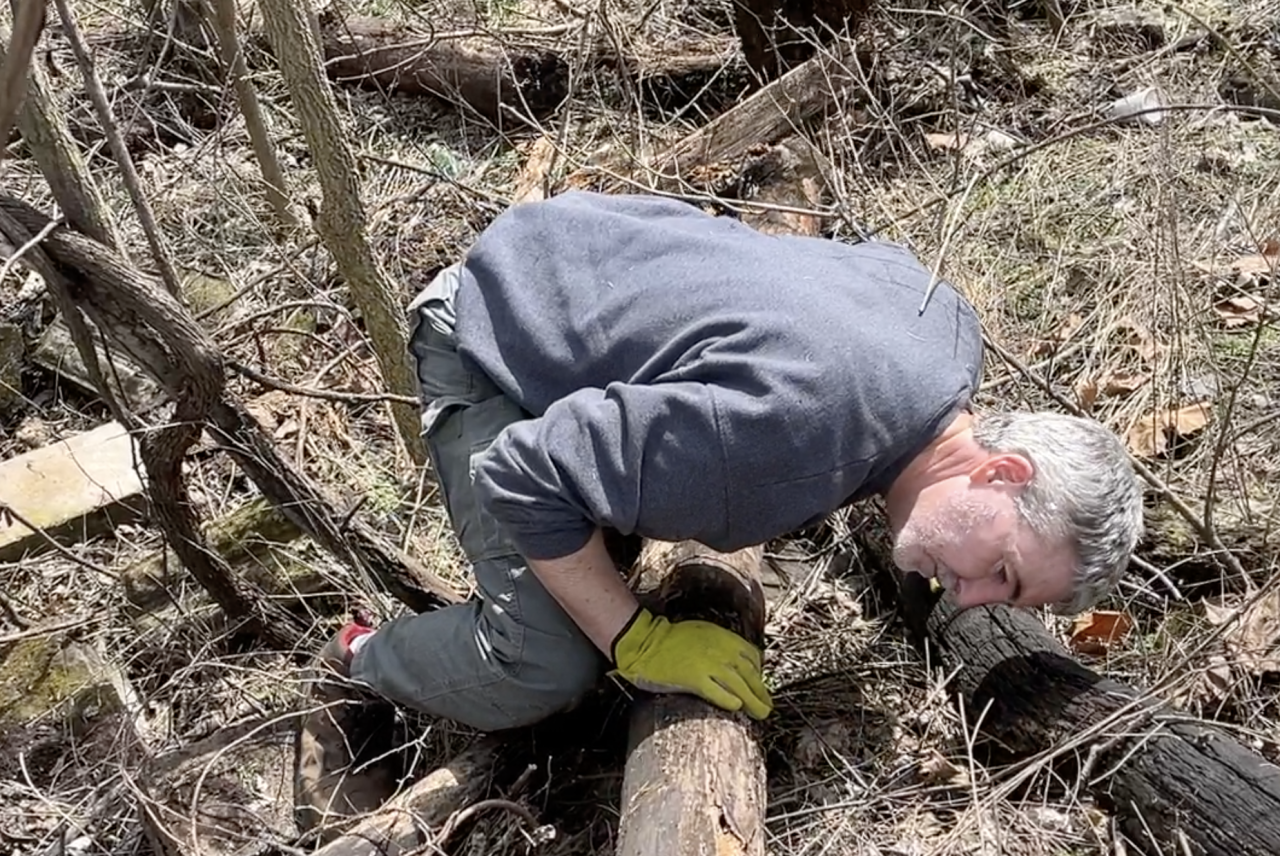HUNTINGTON — Kallie Bontrager leans in close to Que, an 11-year-old Australian shepherd.
"Go bugs," she says, issuing the command that sends Que and his powerful nose to find the eggs of the spotted lanternfly, an invasive insect that is infesting parts of northern Indiana and threatens the rest of the Hoosier state.
“Right now, we're really working on trying to get Huntington under control,” Bontrager said. “It is pretty spread out, unfortunately.”
Bontrager, Que and Epic are soldiers in the Indiana Department of Natural Resources' battle to destroy this pest.

"I'll bring the dogs up and do some perimeter searching and stuff," Bontrager said. "When they get tired, I'll put them away and then I'll help join in with scraping the eggs."
Bontrager is a nursery inspector for the DNR.
But she’s also a dog mom who trains her animals in obedience and agility competitions.

Shortly after the lanternflies showed up, her bosses at the DNR gave Bontrager the green light to teach her dogs to sniff out spotted lantern fly eggs.
"With a lot of trial and error, and help from friends, and help from other people that have trained some detection dogs, we've managed to get it, so that I'm pretty confident in what they're doing," Bontrager said.
The first reported sighting of the pests in Indiana came in 2021 in Switzerland County. A year later, they were found in Huntington.

The bugs keep spreading and have since been found in St. Joseph, Elkhart and Porter counties.
The spotted lanternfly infestation is bad here in Huntington, a city of about 17,000 residents about 100 miles northeast of Indianapolis.
Epic, a six-year-old Australian shepherd, found the first egg sac on a tree branch as we were walking to the warehouse area where we were meeting other DNR officials on a recent search-and-squish mission.
"They like to hide their egg masses so that they're protected and predators can't find them," said Vince Burkle, assistant director of the DNR's Division of Entomology and Plant Pathology.
The bug sucks juice out of plants and excretes a sugary "honeydew" that attracts other insects and fuels the growth of a plant-killing mold.

Spotted lanternflies prefer the Tree of Heaven, another invasive plant, but Burkle said they are known to feed on black walnut, maple and grape vines.
"So, we want to prevent them from causing damage to those trees, especially black Walnut, maple and grape for the wine industry," Burkle said.
According to Purdue University Assistant Professor of Entomology Brock Harpur, beekeepers don't like spotted lanternflies because their bees feed on the honeydew, which he said fouls the taste of honey.
"It is imperative for beekeepers to keep a careful eye out for signs of the spotted lantern fly in their area and on their equipment," Harpur said. "Should the spotted lanternfly become established in all parts of Indiana, it is expected that honeydew, the secretion that spotted lanternfly leave behind, will become part of our late-summer honey harvest."

The egg sacs are gray and blend in with tree bark. Each sac contains 30 to 50 lanternfly eggs, Burkle said.
The eggs are easy to destroy with a putty knife or scraper.
Burkle just uses his thumb.
"You just kind of smash them and you can see all the goo come out," Burkle said, running his gloved hand over a long line of egg sacs on a fallen tree limb.

The DNR, with the help of Que and Epic, destroyed more than 3,000 lanternfly egg sacs in one recent outing at a single site in Huntington, and more than 14,000 for the year.
"When you take an average of 40 eggs in each mass, that adds up to quite a number of spotted lanternflies that will not hatch come this May," Burkle said. "So, that's a good thing."
To report spotted lanternflies in Indiana:
The Indiana Department of Natural Resources urges Hoosiers to help fight the spotted lanternfly and other invasive plants and bugs. If you see the insect, email a picture of it and the location where it was discovered to DEPP@dnr.in.gov, or call 1-866-No-EXOTIC.
Contact WRTV reporter Vic Ryckaert at victor.ryckaert@wrtv.com or on X/Twitter: @vicryc.







